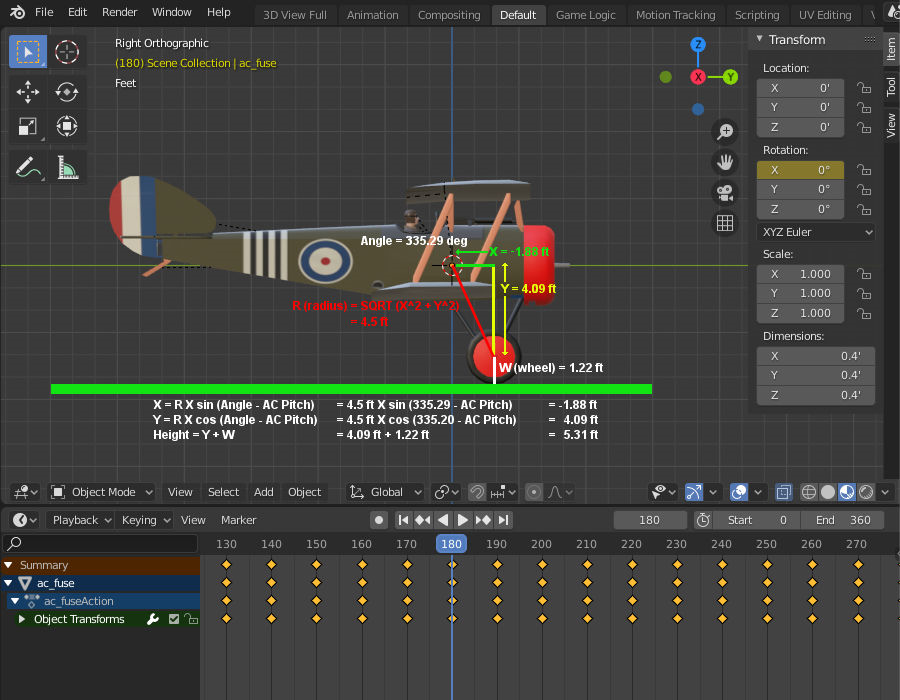
When creating a Flight Simulation Demo, I quickly discovered that I needed to find a way to model the behavior of taildragger aircraft. This was particularly challenging because, while on the ground, the aircraft rotation causes the aircraft to rotate around the center of the wheels (the wheel axis) rather than the center of the aircraft (the aircraft axis). Thus, I had to determine the equations necessary to compute the position of the aircraft axis resulting from rotation around the aircraft axis.

As the above image shows, the aircraft axis rotates in a circle around the wheel axis. When the aircraft is level, the height of the aircraft axis is the distance between aircraft and wheel axes (R) times the cosine of the angle between the axes plus the wheel radius (W). As the aircraft rotates back, the angle between the axes changes by the same amount. You compute the height using this new angle.
As the above image indicates, I considered creating an animation that would rotate the aircraft around the axle while on the ground. However, in order to smoothly transition from ground to air, I had to use the equations above to correctly position the aircraft in the air at the moment of take-off. In the end, it was easier to just use the equations all the time. See attached discussion.
One other challenge was to model the behavior of the tail as the aircraft speeds up and slows down. Normally, the tail will rise as the aircraft speed increases. But this does not mean that the tail must rise all the way up. The pilot can use pitch controls to prevent the tail from doing so. And, in most cases, the pilot will takeoff with the tail slightly lower. This means that the rise in the tail was not a "hard" rise, but only a "suggested" rise.
I also had to take into account situations where the pilot landed the aircraft in a slightly tail-down position. In this case, you would compute the automatic drop in the tail by starting with the position of the tail at the speed where the tail starts to drop.
The Aircraft Information File contains several variables relating to aircraft landing gear, including:
- Ax2CGD - the distance between the wheel center and the aircraft center
- Ax2CGA - the angle from the wheel center to the aircraft center
- WheelR - the wheel radius
This information is used to compute the location of the aircraft axis for various angles, on both taildragger and other aircraft. Even on an aircraft which is not a taildragger, there are cases where the aircraft is angled back while on the ground.
The Aircraft Information File contains several variables relating to taildragger aircraft, including:
- TDrAng - the maximum taildragger angle
- TDrSpd - the speed at which tail lifts
The program does not currently take propeller thrust into account. This could be useful because the tail is lifted by total airflow, including both the airflow due to speed and the airflow due to propeller thrust. However, adding this factor could complicate computations because thrust can vary independently of aircraft speed.